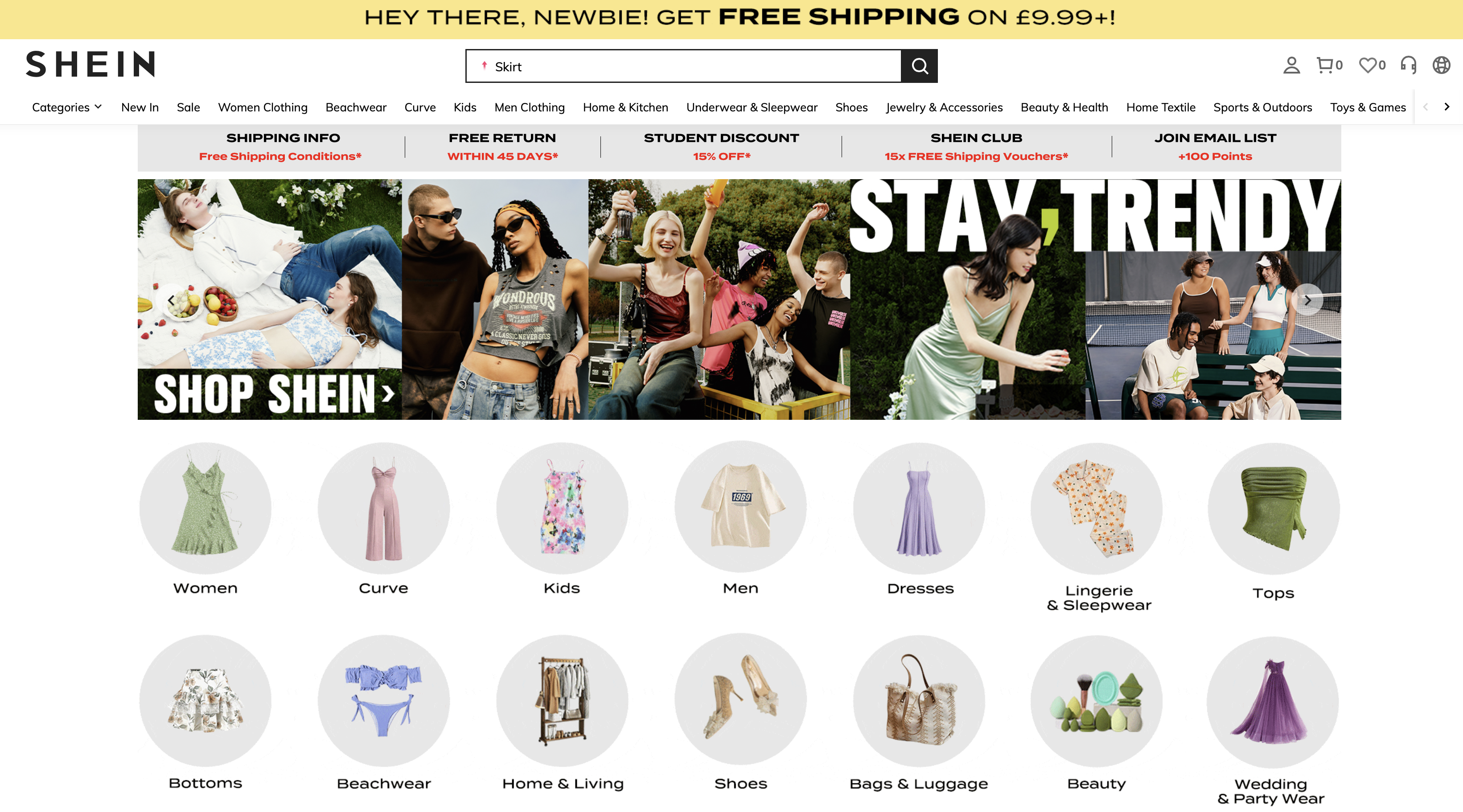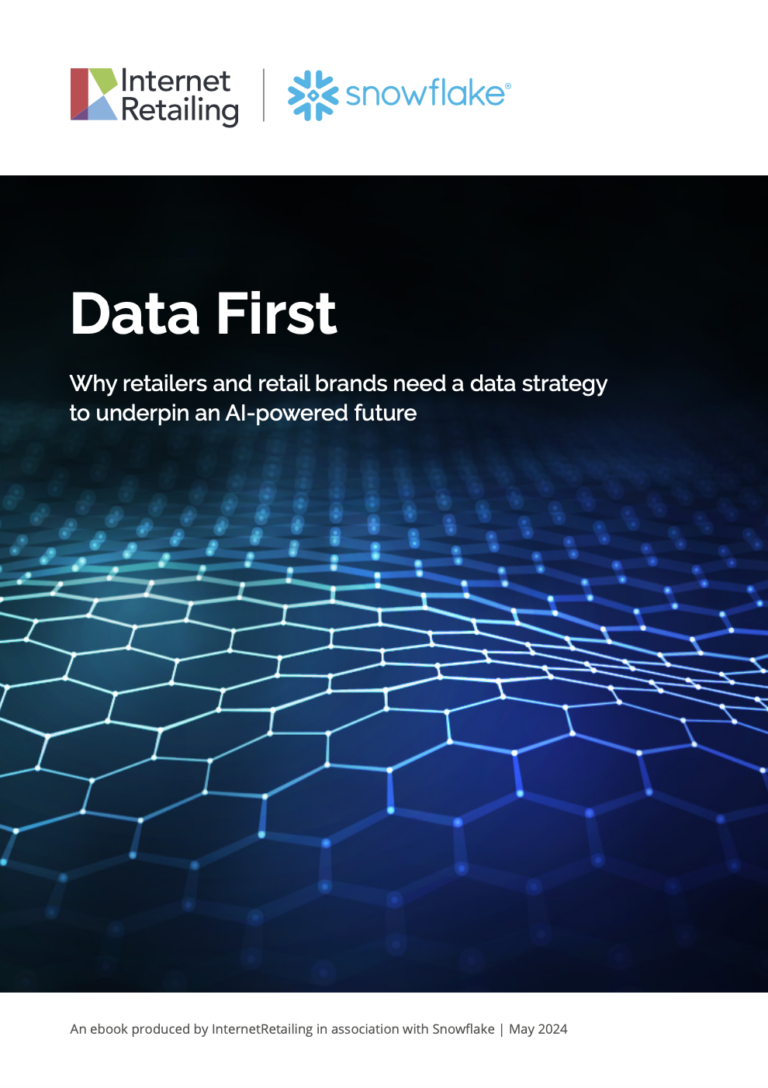Shoppers hit the high street in November, spending 6.9% more in retail than a year ago – and 12.2% less online, the latest figures suggest. Spending was 1.4% higher than in the previous month of October, and but only 0.2% higher online. Online took its lowest share of spending since the first month of the Covid-19 pandemic, according to the ONS Retail Sales report for November 2021.
Some 26.9% of sales were online during the month – the lowest share of sales since March 2020 (22.6%) – continuing a trend that has fallen steadily since it peaked in February 2021 (36.8%).
Many commentators say that while November was a good month for the high street, it’s likely that sales will move further online in December as Christmas shoppers retreat in the light of the Omicron variant. Figures out today from the New West End Company – representing 600 brands, restaurants and businesses in the West End of London – suggest that yesterday’s footfall was 7% lower than a week earlier, and remains 32% lower than before the pandemic.
How shoppers spent across sales channels
In November, the ONS report suggests that shoppers spent 6.9% more than they did a year ago – excluding automotive fuel, to buy 2.7% more goods. They also spent 1.4% more than a year ago to buy 1.1% more goods – again, excluding petrol and diesel. Sales in clothing stores rose above pre-coronavirus levels (+3.2% )for the first time, while overall retail sales were 7.2% higher than in February 2020.
Non-food store sales grew by 2% in November, thanks to higher levels of spending on clothes (+2.9%), and at stores in the ‘other’ non-food category (+2.8%), including computer, toy and jewellery shops – where sales volumes were also 20.6% above pre-pandemic February 2020 levels. Retailers, says the ONS report, noted “strong trading related to Black Friday and in the lead up to Christmas”. Shoppers bought slightly more from household goods stores (+1.2%), although these were 0.6% below February 2020 levels, while buying slightly less from department stores (-0.2%), where spending was 3.4% lower than in February 2020.
How shoppers spent online
Shoppers spent less online in November, says the ONS report, than they did last year (-12.2%), when much pre-Christmas spending was pushed online by the Covid-19 lockdown of non-essential shops. They also spent only slightly more than the previous month of October (+0.1%), with 26.9% of spending taking place online.
Sales fell in all categories compared to last year, but, compared to October, grew in every category except household goods and food.
Some 9.7% of food sales took place online in November, with spending down both compared to last year (-8.4%), and the previous month (-4.5%).
Across all non-food categories, 23.3% of sales were online – down on last year (-18.7%) but slightly ahead of October (+0.2%).
Department stores are the category with the highest share of online spending (27.5%). Ecommerce sales were 26.9% down on last year, and 1.4% higher than in October.
More than a quarter (25.9%) of clothing, footwear and textile sales were online in November, with sales down by 5.9% on last year, and up by 0.6% on October.
Household goods stores saw less than a quarter (23.4%) of sales take place online in November following a 28.1% fall on last year, an a 1.9% fall on October. And 18.9% of sales at ‘other’ stores – from computer, book and toy sellers to jewellers, were online – down by 16.6% on last year but up 0.3% on October.
Pureplay retailers dominate the non-store retailing category, where 83.6% of sales were online in November. That’s down (-7.4%) on last year’s locked down November, but slightly ahead (+1.5%) of spending in October.
The ONS report points out that the share of spending that takes place online may be down from the peak of lockdown in February 2021 (36.8%), but is still much larger than before the pandemic. “While this is the lowest proportion of online retail spending since March 2020 (22.6%), it remains far higher than the proportion of online retail spending in February 2020, before the coronavirus (Covid-19) pandemic, which was 19.7%.”
Industry reaction
Huw Phillips, head of sales at retail finance platform Deko, says: “November’s renewed appetite for in-store shopping is visible in the decline of online sales, with 26.9% being the lowest level since March 2020. It is clear, however, that habits have changed, as this figure is still considerably higher than pre-pandemic ecommerce levels.
“With supply chain bottlenecks predicted to reach well into next year, retailers will have to prepare for further shortages over the coming months. In addition, December saw the advent of the Omicron variant and renewed public health urges for restrictions. These developments see retail entering another crisis period after a successful November. The timing is particularly unfortunate, with the busiest shopping weekends of the year being most affected.
“High streets are already seeing a drastic reduction in footfall, and the ecommerce market share will undoubtedly rise again over the winter months, as customers resume a more careful attitude to in-person shopping. Ensuring fast and flexible checkout operations will be key in making the most of this shift for retailers.”
Paul Martin, UK head of retail at KPMG, says: “Strong retail sales in November were driven by Black Friday shoppers and consumers buying early for Christmas, determined to enjoy the celebrations this year. Consumers continue to shift away from household goods buying towards fashion, which has been the biggest winner of consumer spending over the last few months as we approach Christmas. Food sales continued to decline slightly, but are expected to grow as we head closer to the Christmas, with demand for premium labels likely to be high, as consumers shop for top quality items for family feasts over the festive period.
“December could paint different picture for the sector, due to Covid restrictions and concern over rising infection numbers. Retailers will be hoping the roll out of the vaccine booster programme continues to bolster consumer confidence as we head into 2022, against a backdrop of rising interest rates and inflation, which could see the party come to an end and consumers pull back spending as they look to weather the storm and rising household costs.”
Aaron Simpson, founder and executive chairman of cashback app Kindred, says: “This pre-Omicron snapshot of the UK’s retail scene captures a high street in rude health. With total spending, excluding fuel, up almost 7% compared to the same time last year, the strength of the economy and people’s desire to spend are both clear.
“Bricks and mortar stores also did far better than they did during the lockdown-impacted November 2020. But as the Omicron variant sweeps across the UK and millions of Britons switch back to working and shopping from home, the tables are now set to turn once again and we should expect to see online’s share of sales rise sharply in December. Lockdown living has fundamentally changed many people’s shopping habits, and the pre-Covid days when under 20% of retail sales were made online seem an age ago.”
Silvia Rindone, EY UK&I Retail Lead, says: “Retail sales in November landed strongly, despite many retailers choosing to reduce their Black Friday offers. It seems that consumers were keen to do their shopping before any potential supply chain and pandemic disruption.
“However, we are once again looking at a difficult period for retailers, especially for those that have been banking on the Christmas rush. The rise of the Omicron variant will keep shoppers away from high streets, and while much Christmas shopping will switch to online, retailers that are more reliant on footfall and impulse purchases will likely miss out. With rising inflation and the potential for tightening public health restrictions, it’s unlikely that consumers will be rushing back to the high street in the New Year either.
“Given recent supply chain disruption, inflation pressures and rising input costs, retailers will not be able to avoid price increases any longer. More than ever, retailers need to seriously review their proposition, and simplify their offering and supply chains. But the retail industry fought on last year, and it will do so again now. Retailers established new ways of working and learnt how to accelerate decision making and prioritise their customers. Now is the time for retailers to get their muscle memory back in gear, so they can navigate this new wave.”
She says retailers now need to focus on the three Cs: putting the customer first, getting the channel mix right and looking strategically at costs.
Meanwhile, Jace Tyrrell, chief executive of New West End Company, says: “Footfall on Thursday, which is traditionally one of the most popular days for festive shopping, dipped by 7% from the previous week and was down by 32% compared to pre-pandemic levels. With rising Covid cases dampening consumer confidence and a planned Tube strike looming on Saturday, we’re anticipating a muted final weekend of Christmas trading at a time when West End businesses should be enjoying a much needed boost.
“The Government must act quickly to provide temporary financial support to leisure businesses across the UK, otherwise we run the risk of further viable businesses closing their doors in the coming months. These businesses have made significant investments into their Christmas plans, and the Treasury must offer support to mitigate cash flow loss at this crucial time to ensure that businesses can bounce back strongly in 2022.”










